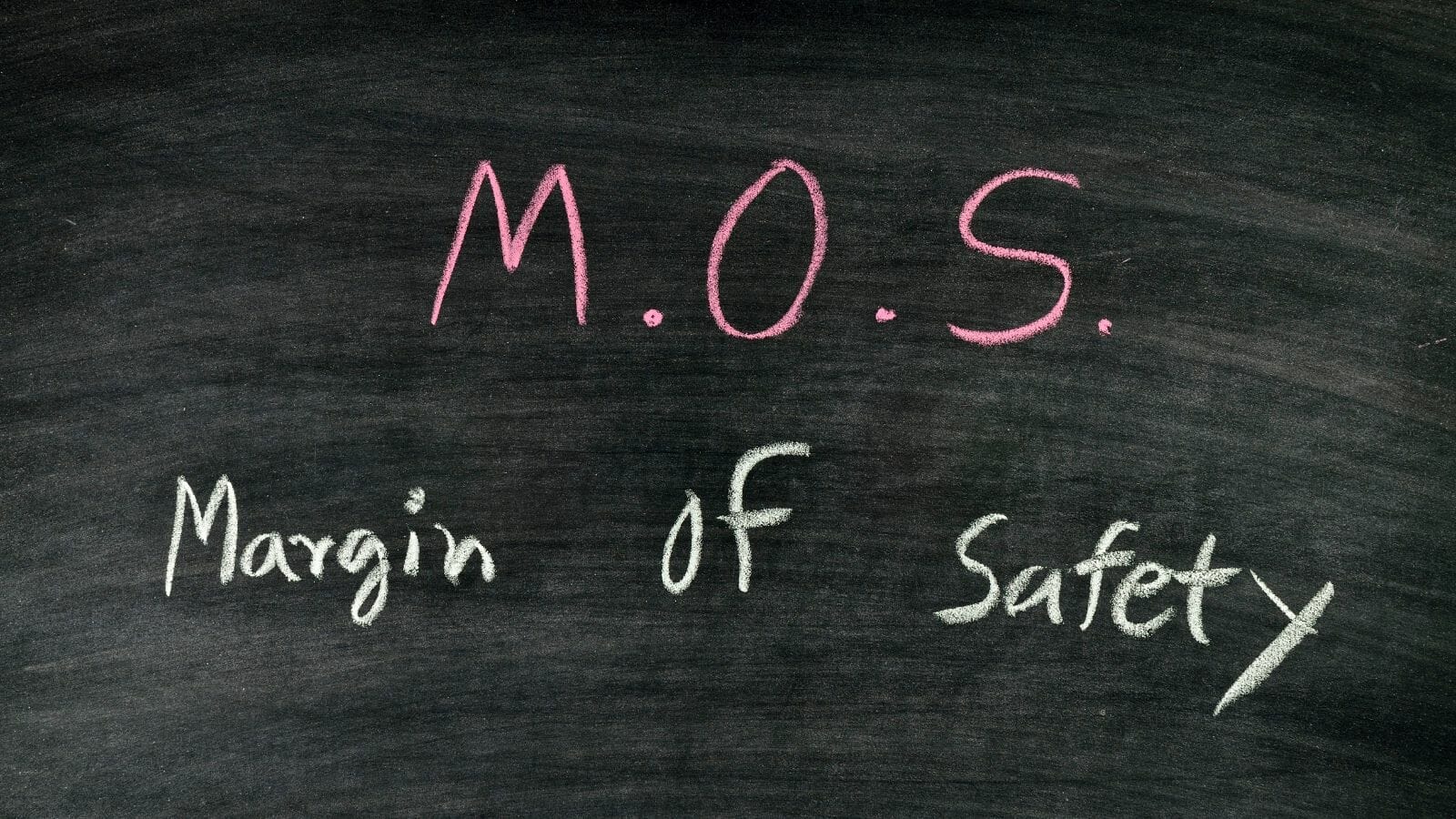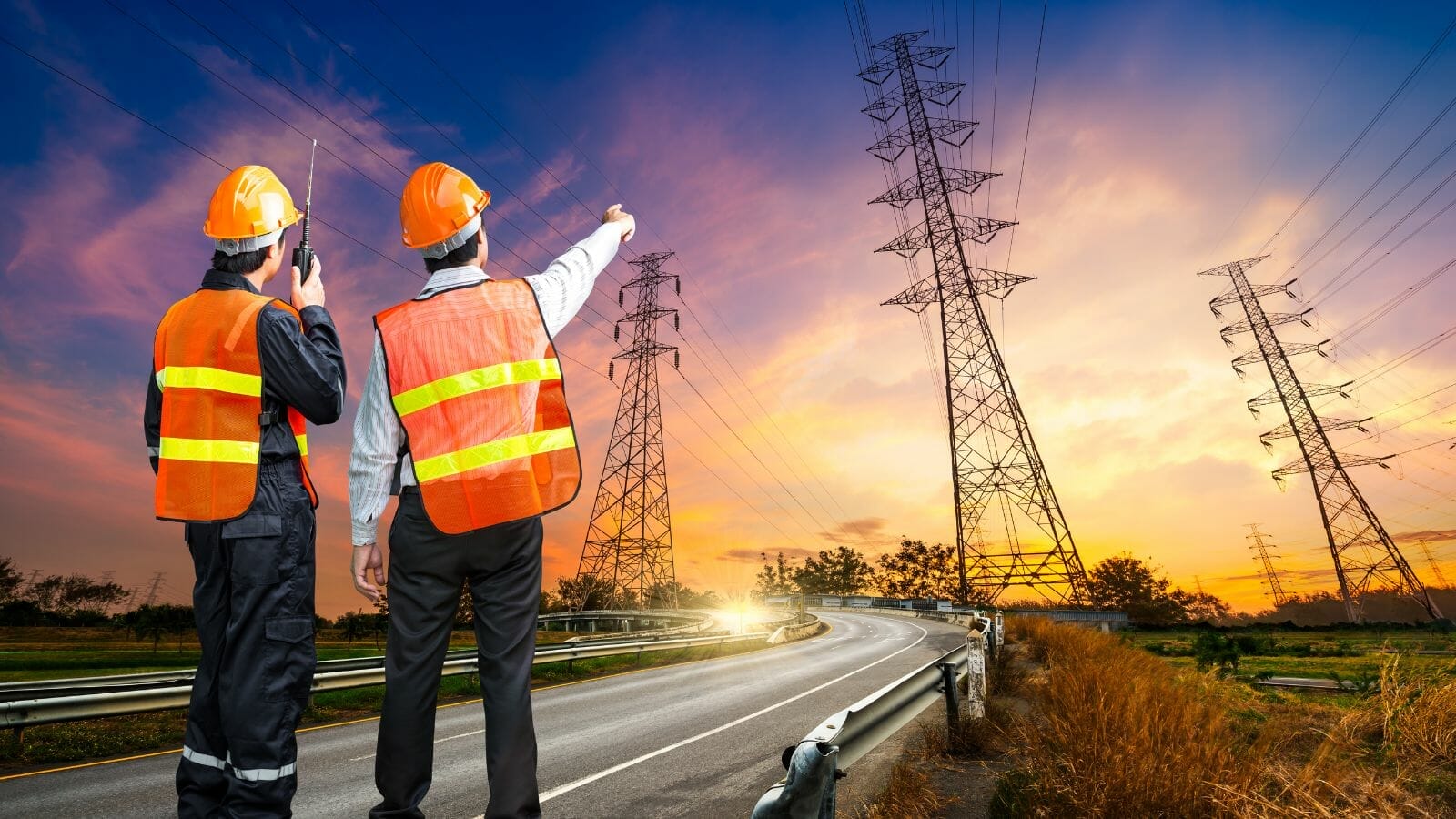Updated 6/7/2023
“Most of the top-ranked business schools worldwide do not understand the margin of safety. For them, low risk and low returns go together, as do high risk and high returns. Over a lifetime, we all encounter scores of low-risk, high-return bets. They exist in all facets of life. Business schools should be educating their students on how to seek out and exploit these opportunities.”
Mohnish Pabrai
The margin of safety is associated with value investors as they seek to find companies selling for less than their value and scoop them up at a discount. But the margin of safety is also a mindset; you try to find companies to buy with characteristics that allow you to relax while owning them.
Many associate margins of safety with investing, but it can apply to other areas of life, such as buying a house. For example, if you buy a home in an area that is declining in value, no matter the price you pay for the home, your ability to recoup your initial investment declines as the property values in your area decline.
Some of my favorite investors talk about building safety margins into their investments, such as Warren Buffett, Charlie Munger, Mohnish Pabrai, Terry Smith, Chuck Akre, and Joel Greenblatt.
All of the above use different margins of safety to find profitable investments for their firms, plus others that follow them.
In today’s post, we will learn:
- What is a Margin of Safety?
- What is a Margin of Safety Formula?
- Other Ways to Develop a Margin of Safety
- The Importance of the Margin of Safety
Ok, let’s dive in and learn more about the margin of safety.
What is a Margin of Safety
The margin of safety is a mindset that says we will buy a company for less than its market value. In other words, we are looking for companies selling for less than their intrinsic value.

We want to buy something worth $1 for fifty cents.
How To Determine Margin of Safety
Depending on your comfort level with an investment, the investor can set different levels of margins of safety. For example, if you are confident that the company has a long growth runway and you feel it is selling for less than it is worth by 15%. Then, by all means, pull the trigger.
But suppose you are looking at a company in a highly volatile sector, such as commodities. In that case, you might want to build a larger margin of safety to accommodate the bigger unknowns associated with that investment.
It comes down to the risk tolerance of the individual investor. And each investor will have different risk tolerance levels and larger or smaller safety margins.
The margin of safety acts as a safety net; if our investment thesis is wrong, it allows us to make an investment and not have many downside risks. The margin of safety allows for the safety net if there is human error, bad luck, or extreme unforeseen circumstances. A great recent example would be the market collapse in March 2020 from the Covid-19 pandemic. Who could have predicted the pandemic? No one, and building in a margin of safety allows for events like that not to devastate our portfolios.
The larger the margin of safety, the less downside risk we take.
The margin of safety concept originated with Benjamin Graham and David Dodd in their masterwork, Security Analysis. Graham also dived deep into creating a margin of safety in Chapter 20 of The Intelligent Investor.
My favorite investing quote about the margin of safety comes from Warren Buffett, and I think it outlines the idea perfectly.
“You have to have the knowledge to enable you to make a very general estimate about the value of the underlying business. But you do not cut it close. That is what Ben Graham meant by having a margin of safety. You don’t try to buy businesses worth $83 million for $80 million. You leave yourself an enormous margin. When you build a bridge, you insist it can carry 30,000 pounds, but you only drive 10,000-pound trucks across it. And that same principle works in investing. – Warren Buffett.”
Warren Buffett
What is a Margin of Safety Formula?
In accounting for a margin of safety, our price matters a lot. We build into our investments a margin of safety by determining the intrinsic value of our investment, or said, what is the asset worth?
We build a margin of safety to allow for leeway between our calculations and seek a breakeven point. Or we are trying to determine how much Company A is worth.
By determining our intrinsic value or breakeven price, we can build a discount to that value or our margin of safety. The discount acts as a buffer to our calculations. By buying our company below that intrinsic value, we build a margin of safety if our calculations are wrong.

How do we build a margin of safety?
First, we must determine the “correct” price for our assets, whether the stock in a company, bonds, or a house. To do this, we must use qualitative and quantitative methods to find the right “price.”
We use company financials, governance, industry reports, assets and earnings, management analysis, and more to determine Apple’s intrinsic value before buying the company.
The price we pay matters a ton; take Microsoft, for example; in 1999, the company was the queen of the markets, but after the dotcom crash in 2000, it took almost 14 years before its price matched its levels in 2000. In other words, the company traded at or below its intrinsic value for 14 years.
Microsoft is a fantastic company with a great product in Azure, but it wasn’t the best investment in the early to mid-2000s. Determining the margin of safety during that period would have helped avoid that period of underperformance.
How do we determine margin of safety?
Step number one is valuation, which means determining the correct price target for your investment. For example, if we want to buy a company whose intrinsic value is $80, and the company is selling for $60, then we have a margin of safety of $20 or 33%. Let’s say that was reversed, and our price target is $60, and the company is selling for $80; now, we are paying more for the investment.
There are multiple valuation methods, models, and techniques, and I have found it is best to have various ways to determine the right price for your investment.
Instead of using the hammer approach, where valuation is a nail, we will use our hammer to determine the intrinsic value.
Here are my favorite valuation methods of choice:
- DCF – discounted cash flow models with positive cash flows
- Reverse DCF – a great tool to determine what the market is pricing into the value
- Relative Valuations – using multiples that focus on the specific industry
- Excess Returns Models – the best choice for valuing financial firms, uses equity as a proxy for cash flows
Whichever method or model you choose, it is important to use more than one. That way, you have a range of values, which helps avoid confirmation bias.
Valuation is part art and part science; when determining a company’s price, it is best to look for ranges instead of absolute values. There is never a “right” or “correct” price; it is all a matter of perspective.
Estimating an asset’s value includes many estimates or guesses, and the idea that we can find the right price is not possible. Instead, it is better to find a range because, as John Maynard Keynes stated, “it is better to be approximately right than precisely wrong.”
No matter which model or method we choose to estimate the asset’s value, we bring our biases and faults into those valuations and are bound to make mistakes occasionally.
How do we avoid these errors? Is it a matter of better models, knowledge, and working harder? Nope, it is building a margin of safety in every investment.
What is the right margin of safety?
That answer depends on your comfort level with risk and how much volatility you can withstand. There is no cut-and-dry answer; Warren Buffett insisted on a 50% margin of safety in his early days. That is not a requirement for him now, as he has morphed into buying better quality instead of cigar butts or cheap companies.
I look for a margin of safety in the 25% range, but I am willing to move that a little if I feel confident in my company assessment. There have been investments where I have had not as much confidence in my valuation, and I waited for the company to drop a better margin of safety before buying. And there have been other situations where I was far more confident in my assessment and was willing to have a smaller margin of safety.
No matter what valuation method you choose, ensure a margin of safety in your investments.
Calculating a margin of safety involves easy math:
Margin of Safety = 1 – (Current market price/intrinsic value)
Margin of Safety = 1 – ( $60/$80) = 0.25 x 100% = 25%
As the current market price moves closer or farther away from the intrinsic value, it will raise or lower the margin of safety. Sometimes we might need to exhibit patience because the company may be trading at $70 or $75, which means that we might have to wait for it to fall to our margin for us to invest.
Other Ways to Develop a Margin of Safety
There are other ways to define building a safety margin beyond using math to find the right investment price. Other ideas, such as portfolio construction, asset allocation, and diversification, can build a margin of safety.
For example, if you think an investment is a great company and is trading close to your margin of safety, you want to participate in the gains you think are coming. You can invest in the company while keeping the percentage of your portfolio smaller; this helps reduce the impact the investment might have if we are wrong in our analysis.

Diversification can help build a margin of safety by buying assets or investments uncorrelated to each other. The idea behind an all-weather portfolio is building a portfolio of uncorrelated assets that rise and fall depending on the tides of the markets.
Diversification helps you avoid concentration risks; for example, if you only invest in real estate and the real estate market takes a hit, your portfolio will match those results. If you diversify by having multiple unrelated assets, you can reduce the risk of total portfolio drawdowns in a down market.
The types of companies you buy also have a bearing on your margin of safety. For example, if you buy mature, stable companies such as Berkshire Hathaway, Johnson & Johnson, and Verizon. The volatility and market fluctuations will be far more narrow because those companies are strong, stable businesses that create stable cash flows.
Those characteristics allow them to be bond-like in price fluctuations and expected returns. And if you invest in other more conservative industries like health care, defense, and utilities, your margin of safety comes from the steadiness of returns and far less volatility.
Portfolio construction goes a long way toward building a margin of safety in our investments. Having a mix of different types of investments allows you to gamble or speculate occasionally without putting the overall returns at risk.
The Importance of the Margin of Safety
Developing a margin of safety for our investments helps act as armor if there is a downturn in the market or if we make mistakes in our analysis. After all, we are all human, and we do make mistakes.

But the price we pay is important, as I mentioned earlier with Microsoft’s example through most of the early to mid-2000s.
But why is it important?
There are two reasons for a margin of safety. The first is the return we can expect if you invest in a company trading at a high multiple or above its intrinsic value is low.
For example, look at the earnings yield from reversing a P/E ratio. Take a P/E of 15, which mathematically is:
P/E 15 = 15 / 1
If we reverse the formula, we get an earnings yield:
P/E 15 = 1 /15 = 6.67%
That tells us a company with a P/E of 15 should expect a return of 6.67%. Now, if we look at a company with a much higher P/E, say 36. Our yield becomes 2.78%. To put it into context, let’s look at some of the P/E of the top market caps:
Company | P/E | Earnings Yield |
Amazon | 71 | 1.4% |
27 | 3.7% | |
34 | 2.9% | |
Tesla | 836 | 0.1% |
Apple | 32 | 3.1% |
Higher-valued companies typically have lower long-term return expectations. Now, betting against any of these companies is not something I wish to engage in, especially Amazon. They have continued to defy expectations, but as a general rule, the higher price, the lower the expected return over the long term.
So the price we pay matters; Microsoft’s P/E at the height of the dotcom era was around 65, and sure enough, the company’s return over the next 14 years matched that expected return.
All this is to say, we need to understand the business, its industry, and its potential growth. Because the price you pay matters, you risk either a sideways return or a drop in value if you buy at the top.
For example, if you buy a company with growth across the board, but it is trading at a P/E of 75, it has to continue to grow to justify the elevated price. But once that growth slows or stops, the company’s price will fall because it doesn’t have all that growth to justify the value.
I am not saying you shouldn’t invest in growth companies or companies with elevated valuations; instead, I warn you to understand what you buy and why.
The second impact of ignoring a margin of safety or failing to build one is the impact of drawdowns or a fall in prices. The math of percentages shows that the bigger the percentage loss, the greater the return necessary to recover to breakeven.
For example, if you buy a company for $10, and it falls to $5, it takes more than a $5 recovery to break even because of the law of compounding.
Below is a chart to show the impact of price changes:
% Loss | % Gain to return to even |
10 | 11 |
25 | 33 |
50 | 100 |
80 | 500 |
The chart shows the impact of losses in price and what kind of return we need to see to return to breakeven. That is why building a margin of safety in our investments is important.
We will never be able to avoid volatility or drops in the price of any investment we make, but having a margin of safety helps avoid the impact of bigger drops; if you have a drop of 10%, but you bought with a margin of safety, you still have a 15% cushion to absorb any additional drops.
Investor Takeaway
Building a margin of safety in our investments is important; Warren Buffett said it is one of the most important ideas to embrace in investing.
After all, his most famous rule is:
“Rule number one: don’t lose money.
Rule number two: don’t forget rule number one.”
Besides not losing money, we must find a price that makes sense for our investment. Building a margin of safety based on your investment rules and guidelines will help you sleep better at night. Along with not losing money, it also helps prevent long drawdowns and gives us confidence that we are choosing wise investments.
The price we pay matters a lot, and finding the value of our investments is important. It doesn’t matter which method or model you choose; it is more important to be consistent, apply your process equally, and avoid as many biases as possible.
Remember to find a range of values and determine which you think is the most reasonable based on what you know about the company and its industry.
And with that, we will wrap up our discussion on the margin of safety.
As always, thank you for taking the time to read today’s post, and I hope you find something of value in your investing journey. If I can further assist, please don’t hesitate to reach out.
Until next time, take care and be safe out there,
Dave

Dave Ahern
Dave, a self-taught investor, empowers investors to start investing by demystifying the stock market.
Related posts:
- How To Best Reduce Investment Risk – A Comprehensive Framework Updated 4/21/2023 After much effort, you have finally mastered value investing. You now know how to identify good companies and value them. You also only...
- Stock Buying Checklist: Essential Part of Evaluating Stocks (Example Checklist) The stock buying checklist is one of the essential tools to any investor, in my opinion, and to most, an underutilized tool. Using a checklist...
- What the Value Trap Indicator Is and What It Is Not. “But I’m just a soul whose intentions are good, Oh Lord, please don’t let me be misunderstood” –Nina Simone If you’re reading this, you’ve either...
- Jean-Marie Eveillard’s Investment Strategy and Roller Coaster Performance Jean-Marie Eveillard was Morningstar’s International Stock Fund Manager of the Year in 2001. He grew Assets Under Management (AUM) to $100 billion with his flagship...
